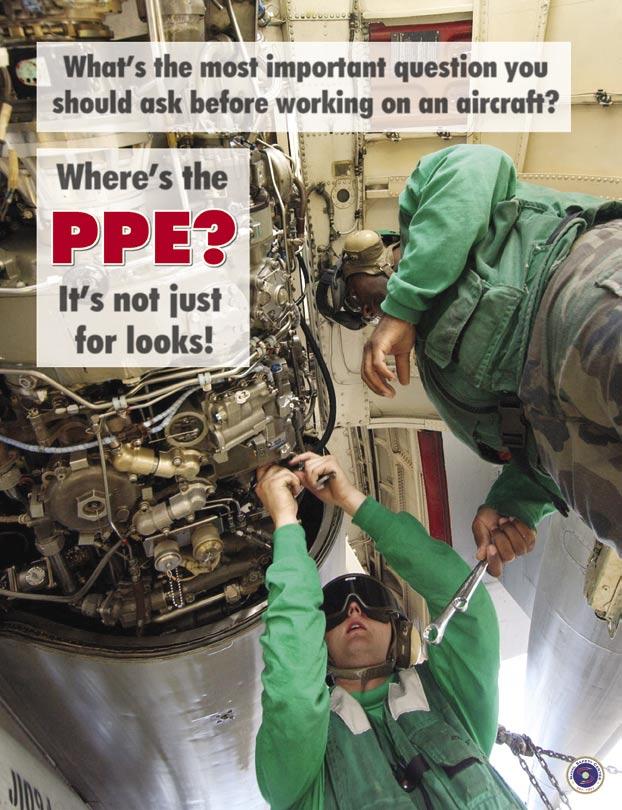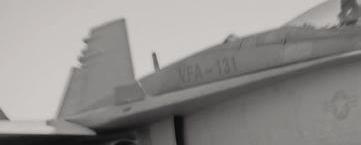
26 minute read
Shrouded in Confusion
By AM3 Steve Rutledge
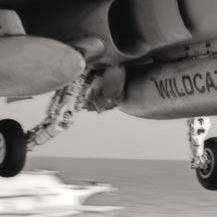
Advertisement


Mishaps usually occur because someone fails to follow rules, resulting in preventable damage or injury and the need for a mishap report. Navy or civilian maintainers never want to face that reality; yet, I must share how a proper pass down caused me to put my Class C mishap on paper.
Halfway through our Arabian Gulf cruise, maintenance had become the same, day after day. I had done every type of job many times with no problems and with plenty of time to complete each task. Early one evening, though, things changed. I was installing the port and starboard TEF shrouds, and a mishap resulted because I failed to put in a few cotter pins. The shrouds subsequently came apart in flight, damaging the starboard trailing-edge flap and the horizontal stabilator. The steps leading up to the mishap are a perfect study of what happens when maintainers are pressed for time, simultaneously are doing various jobs, and are tired.
I started on the port side of the FA-18C Hornet and made the first in a series of mistakes. I had the wrong pin for the port TEF shroud. Unfortunately, I already was on the aircraft when I noticed this problem. Why hadn’t I checked the hardware in the shop? In this case, the hardware and tools already were on the aircraft from a previous task. I simply took over the box and hardware. My second mistake was not getting a pass down from the previous maintainer. That fact led to my third mistake: I took over a toolbox I hadn’t inspected, assuming responsibility for it as if I had.
More mistakes followed these three, but let’s get back to that wrong pin. I realized it was too short just as my LPO walked toward me. He asked how I was doing, and I replied, “I have a pin that is too short for the outer bushing.” I gave him the pin and continued my work, installing the remaining pins and cotter keys. I also put down the safety panels and installed the fasteners. I then went to the starboard side and repeated what I had done on the port side.
When installing TEF shrouds, you work from inboard to outboard—at least that’s what I thought. My next mistake was simple and stupid: I didn’t have the pubs with me and, for all I knew, could have been installing these shrouds improperly from the start.
My LPO returned with the right pin for the starboard side. When I went to finish the starboard side, the hangar–deck chief asked me if I would ride the brakes. I agreed to do so—another mistake because it distracted me. They wanted to put the aircraft in a turn spot, so I installed the outboard pin and cotter keyed it. However, I did not “butterfly” the cotter key, a serious error.
I gathered up my hardware, put it in the toolbox, and handed the box to an airman, who returned it to the shop. I then climbed into the cockpit and rode brakes, so we could move the jet to a turn spot. I sat in the cockpit for about 20 minutes before the hangar-deck crew was ready to move the jet. That turn took priority over finishing the job I had started.
The jet finally was respotted, but, as luck would


The missing shroud and other damage to the aircraft is visible in these photos.

A missing pin is a simple mistake that can cause huge problems.
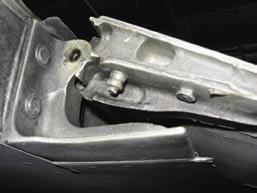
The right hardware can mean the difference between success and failure.
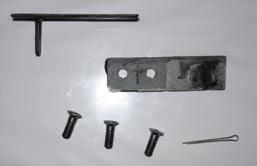
have it, we were delayed for 10 to 15 minutes more, waiting to figure out the engine problem. I sat on the LEX (leading-edge extension), waiting for an AE so the low-power turn could proceed.
When the electrician showed up, we turned the aircraft for about 45 minutes. Then I got up from the LEX, ready to leave the jet. Our hangar-deck chief grabbed me and asked if I could put on the covers for the canopy and windscreen. I did so, got off the aircraft, and was ready to go to the shop. I remembered that I had to take panels 53L and 53R with me, which I happily did because the job finally was done.
My final mistake would be the most costly. We had a shop meeting that had nothing to do with maintenance; when it was over, I finally was secured. It was time to go to the rack, but I didn’t tell anyone that the panels and pin still needed to be installed. I instead assumed that the person checking my tools would see the pins and panels, ask someone, and would get a pass down. As it turned out, night check didn’t know anything about the job. They knew only that panels 53L and 53R had to be installed. The TEF shrouds weren’t discussed.
I walked past the aircraft on my way to berthing and saw them prepping it for another turn. Maintenance wasn’t on my mind; I just wanted to hit the rack! I found out about the situation when the damaged aircraft returned.
I spelled out these errors because my lapses reflect the human-factor problems that Navy personnel face on a daily basis. Day—to-day maintenance, fatigue, and a steady routine can consume you. It did with me—to the point where I wasn’t thinking any more. I just was doing maintenance over and over in a fog—not a good thing in a combat environment, where it’s essential to have up jets for the flight schedule. A perceived rush develops, and it builds pressure on maintainers, leading to shortcuts and hurried procedures. This happened to me, and our CDIs and QA personnel never checked the work.
I could have avoided this situation had I done a proper pass down, taken ownership of the jet, and made sure the work was done correctly and completely. Instead, I’m left with a black mark on my Navy career that I never will forget. I’m grateful the pilot was able to land safely with minimal structural damage to the aircraft. My failures are clear, and I’m working to regain my reputation and trust in my maintenance ability. I’ll succeed, but it would have been easier to have done the job right…the first time.
Petty Officer Rutledge works in the airframes shop at VFA-131.
Send BZs to: SAFE-Mech@navy.mil



BZ Quarter of the
AD2 Marshall Reeske HSL-42 Det 10
Petty Officer Reeske, a CDQAR, had to inspect the main rotor blades with centering sockets aligned. Even though the socket alignment is based solely on torque values and no prescribed visual-inspection procedure exists, he felt that the whole setup “just didn’t look right.”
Petty Officer Reeske immediately ordered the sockets realigned, but one blade’s lower centering socket slid forward with no torque at all. Reaching into the rotor hub, he could feel the socket, and it moved freely. After the blade was removed, the socket was cracked in two places, most likely from material failure. This find was remarkable because it was a non-routine visual inspection and done by a CDQAR—work above and beyond his normal duties.

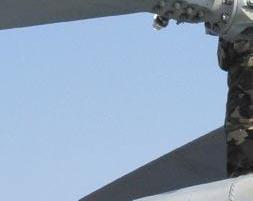

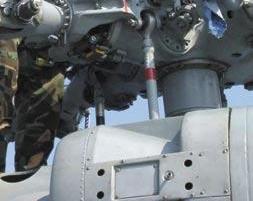
ADAN Roberto Vargas HSL-42
Airman Vargas accompanied the crew of Proud Warrior 420, an SH60B, to Ambouli Field, Djibouti for a routine personnel transfer. Working as a plane captain at the field, he noticed a large amount of hydraulic fluid on the upper housing of the aircraft and expeditiously instructed the crew to shutdown.
After shutdown, Airman Vargas discovered a blown damper seal on the main rotor, leading to the loss of all hydraulic pressure and fluid in the rotor head. He then ensured the aircraft was secured and steps were taken to clean the area of hydraulic fluid.
Airman Vargas’ actions prevented the helo from returning to the ship with a damaged main-rotor damper, a problem that could have caused a mishap. Sgt. Delagarza, Sgt. Thomas, and Cpl. Johnson VMFA-251
These Marines were pre-positioned at the departure end of runway 31 at NAS Fallon, Nev. to arm aircraft ordnance. As two FA-18s loaded with four Mk-82 general-purpose bombs taxied past, they noticed the second aircraft’s port tire was flat and smoking. They ran after the aircraft, trying unsuccessfully to get the pilot’s attention. The Marines subsequently called the control tower with their hand-held radio. The tower notified the pilot, who taxied clear of the runway and shut down the aircraft.
An inspection revealed the left brake was dragging, which caused the brake to heat up and deflate the tire. Their actions prevented a fire from developing that could have cooked off the ordnance.
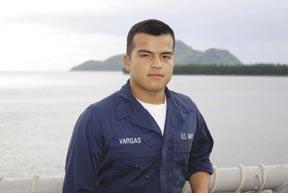
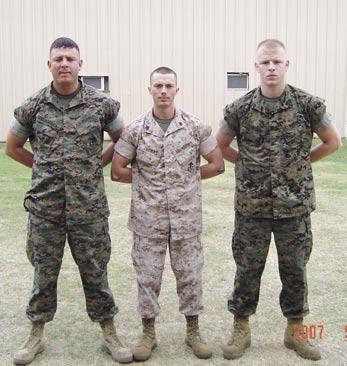
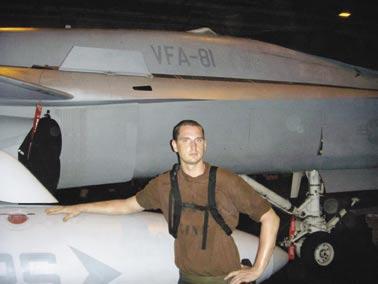
ADAN Kyle Jones VFA-81
Aircraft 400 was being pushed back on the bow. Airman Jones noticed the move director was positioned on the starboard side of the aircraft and could not see he was dangerously close to backing 400 into the nose of another aircraft. Jones immediately signaled the tow-tractor driver to stop.
The port horizontal stabilator was within 18 inches of the radome of aircraft 411. Airman Jones’ quick thinking and assertiveness averted what would have been a crunch between two SUNLINER aircraft, saving the Navy more than $90,000 in repairs.
AD2 Pabbie Perez HSL-37 Det. 2 AMAN John Alba HS-2 LCpl. Jan Archie Aporongao VMFA(AW)-225
While doing a 14/28-day special inspection on an SH-60B, Petty Officer Perez felt a sharp point protruding through the protective lagging on the compressor bleed-air line of the No. 2 Engine. A closer look revealed a halfinch crack and depression in the line. He immediately notified the detachment maintenance chief, downing the aircraft until the line was replaced.
Petty Officer Perez showed keen attention-to-detail and extra effort that prevented a serious in-flight engine problem. returned from one of many FCF flights it had flown that day and was shut down to make rotor-head adjustments. Airman Alba was a troubleshooter, and he noticed a fastener for the tail-gearbox cowling had popped. He tried to tighten the fastener, but a closer look revealed the anchor nut was missing. He removed the cowling and found the anchor nut lodged between the spring capsule and flight-control cable. This FOD could have caused control problems, possibly causing a mishap. AD2 Christian Davis
Assigned to repair a fire-light discrepancy on the port engine, Petty Officer Davis noticed a broken insulating Micarta block on the aft inboard segment of the engine. Further inspection revealed several loose clamps and missing hardware.
Petty Officer Davis’ thorough inspection and prompt notification of the discrepancy led to removal of the port engine and discovery of several more discrepancies, including a pinched fire-warning element and loose vent-seal line.
With sunset fast approaching, the flight crew was pressed for time to complete an FCF. Falcon 611 just had VAW-121
Lance Corporal Aporongao was doing a daily inspection on an FA18D when he noticed the brake wear indicator on the right main landing gear was worn beyond acceptable limits. He immediately downed the aircraft, and it was taken off the flight schedule.
Upon removing of the tire and wheel, shop personnel discovered that the brake had not worn down; it had shattered, leaving multiple pieces of the brake loose inside the wheel assembly. Had LCpl. Aporongao not been so thorough in his inspection, a mishap clearly would have occurred. AM3 Robert Shultz HSL-37 Det. 2
While troubleshooting a tail-wheellockpin discrepancy on an SH-60B, Petty Officer Shultz noticed excessive fluid around the top of the shock strut on the tail landing gear. He also noticed the packing was unseated and was working its way out of the tail strut.
Petty Officer Shultz paid attention and used the 18-inch rule to find a hazardous and potentially catastrophic condition.
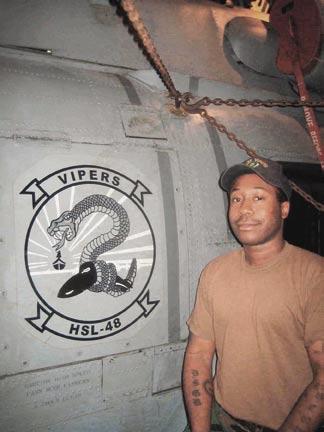
She was working in the line division, refueling a Zapper aircraft at NAS Fallon, Nev., when she suddenly discovered the refueling truck was operating at 80 psi. The NATOPs states the maximum fueling rate is 55 psi. The newly qualified truck operator was confused, so Airman Recruit Robles jumped in, preventing over-pressurization, a chimney buckle, or worse.
Her keen attention to detail and prompt action is what you’d expect from a more senior and experienced plane captain.
AD2(AW) Tyson Brown HSL-48 Det. 7
While troubleshooting a fuel selector-valve discrepancy on Venom 511, he noticed a nut on the aft bridge that appeared loose. Closer investigation determined that the port, aft bridge support had backed off. Had this situation gone undetected, the bolt could have fallen out, resulting in a loss of aircraft control.
On the helo’s final QA inspection, Petty Officer Brown also noticed a cracked lower bushing on the lockpinfitting assembly for the tail pylon.
AR Crystal Robles VAQ-130
Airman Recruit Robles prevented an incident that could have seriously damaged equipment and cost lives. AE3 Robert Boswell VFA-195
Petty Officer Boswell was troubleshooting a complex pressurization and ECS-flow discrepancy on Chippy 401. He was doing an in-depth inspection of a wire bundle in the aircraft belly, near the ECS turbine, when he discovered a splice point, internal to the bundle, had melted. He repaired the splice point, and the ECS discrepancy checked good during aircraft ground turns and in flight.
Petty Officer Boswell’s thorough troubleshooting techniques and diligent work practices returned a valuable fleet asset to service quickly and efficiently. He clearly prevented a potentially catastrophic problem with cabin-pressurization. AT2(AW) Brian Burney HSL-37
While working on a daily-andturnaround inspection on an SH-60B, Petty Officer Burney discovered the first-stage hydraulic line, which leads to the tail-rotor servo, chaffing against the airframe in the tail section of the aircraft. He immediately notified maintenance control, and wrote a downing discrepancy. The first-stage hydraulic line was removed and replaced.
Petty Officer Burney was pivotal in breaking a mishap chain of events that could have led to the loss of tail-rotor control.
AMAN Jonathan Harris HSL-48 Det. 1
During work-ups on board USS Hue City (CG-66), the night shift flightdeck director, Airman Harris, noticed the ship start a turn. This movement was a problem because the aircraft was in a “straightening evolution.” He quickly informed the LSO, stopped the task, and secured the aircraft. Seconds later, the ship took a heavy roll, and the bridge confirmed they were turning (with an amber deck).
Had it not been for Airman Harris’ alertness and safety attitude, this simple task may have resulted in aircraft damage or worse.
AM2(AW) Michelle Reynolds HSM-41
Petty Officer Reynolds was a troubleshooter on a routine hot seat of Island Ruler 17. During the crew swap, she noticed unusual sounds and vibrations coming from the SH-60B’s tail rotor. Recognizing the seriousness of the situation, she immediately told the PC to shut down the engines.
QARs inspected the aircraft and found seven of 16 outboard retention-plate bolts had backed off torque. Petty Officer Reynolds’ assertiveness and keen attention to detail averted an imminent and catastrophic tail-rotor failure. AD2 Micheal Sabia HSL-37 Det. 1 ADAN Justin Atchley
During a troubleshooter walk-around inspection of Rook 501 with a new trainee, Airman Atchley found a problem with the heat shield while closely inspecting the ram-air scoop. A sizable hole was in the heat shield. He immediately notified maintenance control, and the aircraft was repaired in time for the next launch.
Although not a published procedure, Airman Atchley’s meticulous inspection, thorough work ethic, and detailed training steps led to his timely discovery.
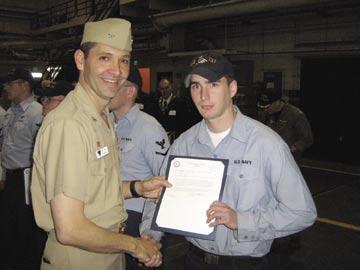
a penlight and magnifying glass. He immediately told the detachment’s maintenance control and downed the aircraft. Further inspection revealed several of the metal strips inside the spherical bearing were cracked and de-laminated, rendering the bearing unserviceable.
Petty Officer Adames’ keen eye found a possible fuel-system malfunction in an area outside his normal duties, preventing a potentially catastrophic outcome.
VAQ-137
During a phase “D” inspection on an SH-60B, Petty Officer Sabia found a small crack in the spherical bearing of the blue blade spindle, using just AO1(AW) Javier Adames HSL-42 Det. 3
On a daily inspection of Proud Warrior 432, Petty Officer Adames used the 18-inch rule while inspecting the transmission oil-cooler access. He found a cracked B-nut in an obstructed location on the underside of the No. 2 engine’s fuel-selector line—a good find in a tough area. He told the lead mech and immediately downed the aircraft. A subsequent inspection revealed another cracked B-nut on the No. 1 engine’s fuel-selector line.
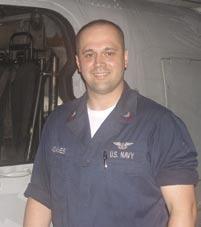
CROSSFEED
Maintenance Officer
Cdr. Bert Ortiz bert.ortiz@navy.mil
Editorial Coordinator
ADCS(AW) Michael Tate
PPE
Problems and Solutions for Respirator Storage
By AMCS(AW) Robert Chenard
Problem: Almost half of the commands surveyed in FY-07 did not store respirators properly. This error can lead wearers to inhale particulate matter, or the respirator becoming distorted to the point that it no longer provides adequate protection.
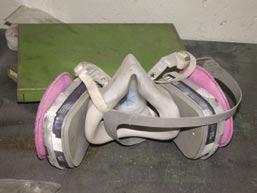

Solution: OPNAVINST 5100.19E, Paragraph B0609 tells users to place respirators in a clean plastic bag or other container. It goes on to say that zip-lock bags are preferred, and users should make sure the respirator is completely dry to prevent mildew. It also addresses the fact that they should be stored “flat” in a clean, dry and uncontaminated area, urging that users not “crowd them” to avoid distorting the face piece. This hint especially is true for respirators that are not used frequently—like those in small composite repair facilities or those used for fit test.
Best Practice: MALS-31’s 500 division, which has a light respirator workload, has a good idea. michael.tate@navy.mil They use sterile storage bags from Georgia Steel and Chemical Company, Inc. One box has 48 bags that are 8 inches by 5 inches by 26 inches and comes with bag seals, which they use to write down the date last cleaned and inspected. This technique doesn’t eliminate the need to maintain a historical record of the inspections, but it quickly identifies that the respirators are stored properly and are readily available to protect their people—the real purpose behind specific storage requirements.
Senior Chief Chenard is a maintenance analyst at the Naval Safety Center.
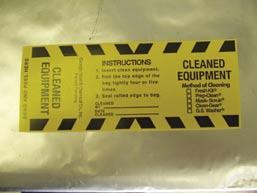
Airframes
Let’s Talk Nuts, Bolts and Structural Hardware
By AMC(AW) James Litviak
Problem: Thousands of incidents have occurred since the beginning of naval aviation because of the improper use of structural hardware. We experienced everything from loss of life, catastrophic failure of critical components, fodded engines, to a simple locknut missing for the jumper wire on a landing-gear door. In the fleet, we often see preexpended bins that have screws mixed with nuts, washers mixed with cotter pins, and hardware that doesn’t even apply to aviation.
Solution: The illustrated-parts manual for specific platforms and the NA 01-1A-8, “Structural Hardware Manual,” are the bibles to follow. All airframers should be familiar with these manuals and become experts on the content. You should know the difference between tensile and shear strength and cadBy AMCS(AW) Robert Chenard
Problem: During my surveys, it is evident that a number of program managers are not following their program references.
Solution: I look at six programs and do so around the fleet. If you want to make your program “above average,” you need to follow all the related program references. Here are some helpful hints:
Hydraulic Contamination: The electronic particle counter (EPC) logbook and the QA trend-analysis record go hand in hand. COMNAVAIRFORINST 4790.2, Vol. V, para. 6.3h(11) says that the worker must “ensure all hydraulic samples performed are sent to QA for hydraulic contamination control, trend analysis.” So a sample in the EPC log must be in the QA trend record, too. I also recommend taking this requirement a step further and document patch-test results, as well. This step will ensure your people record and deliver hydraulic-sample results, regardless of the method used—then make sure any required sample entries are annotated in the aircraft logbook or support-equipment record.
Tire and Wheel: Check your jacks! If the loadmium plating vice stainless steel. Supervisors and CDIs must make sure the right hardware is available when tasked to do a job. Supervisors, also must inventory pre-ex material, and get rid of that “100 year bin.” Hold training on using the right hardware, and discuss the effects of using substandard items. These steps will make equipment last longer.
Best practice: The best squadrons I’ve seen have centralized and controlled pre-expended bins with accurate inventory, and they are managed in accordance with COMNAVAIRFOR 4790.2. Specific shops in these commands accurately document consumable parts, by part number, on the VIDS/ MAFs.
Chief Litviak is a maintenance analyst at the
Fixing Airframe-Related Problems — Part I
Naval Safety Center. test date is expired, the jacks must been turned in. If you don’t, this error will set your command’s SE PMS program below average.
CNAF 4790.2, Vol. V, para. 7.3c(2) says the program manager shall “provide follow-on training as necessary.” Your supply/expediter personnel handle tires frequently, but they aren’t getting regular safety reminders like the “tire changers” do. I recommend you provide training for them on a quarterly basis and document it. A simple tip is to put a muster sheet in the program binder, as well as the individual training record, to track who has missed the training, so you can get them up to speed.
Corrosion Control—CNAF 4790.2, Vol. V, para. 14.4a(5), (6) and (7)(a)(b), is very clear on the make up of the corrosion-control work center. CNAF 4790.2, Vol. I, par. 1.4c(2)(a) covers “deviation requests based solely on manpower constraints.”
CNAF 4790.2, Vol I, Chap 10.3.1, “Aircraft and Support Equipment Painting,” is three pages of revisions that you and your respiratory-protection program manager need to be aware of. This section should be included in your program references.
Volatile organic compound (VOC) is defined in CNAF 4790.2, Vol. I, Chap. 10.3.1c., NAVAIR 01-1A-509, Vol. 2, App. A, para. A-4.1.1. states, “It is the responsibility of the user activity to ensure that applicable rules are understood and obeyed.” Check with your local base environmental office to see if this area applies to you. App. A discusses VOC in great detail and provides a list of VOC-compliant chemicals. Emergency Reclamation—CNAF 4790.2, Vol. V, para. 14.3b(14) says to “conduct and document quarterly training and drills” and that “the drills shall encompass specific maintenance and all emergency-reclamation procedures.” I recommend you keep a memo about the drill, muster report of the members who attended, and description of the scenario. Keep this information in your program binder for easy reference.
NA01-1A-509, Chap. 9, para. 9-3.3 and table 9-2 describe the items you need to have in your ERT kit. Table 9-2 specifically calls for full-face respiraBy PRC(AW) Brian Westcott
Problem: Parachute riggers are cited in too many HMRs, and risk assessments on the ALSS gear often come out coded as a 1E. The result: A bulletin likely is issued, and PRs receive more of them than any other group in NAVAIR.
Unfortunately, most of the HMRs we’re seeing often are because riggers didn’t pack ALSS in accordance with the pubs. We simply are overlooking basic CDI steps. I understand that our shops are undermanned, but how many more errors can we accept?
In the last eight years, parachutes had 39 bulletins, life preservers 50 bulletins, and life rafts 59 bulletins. In 2007 alone, NAVAIR issued 11 bulletins for life preservers and 15 on life rafts. These items are a direct result of non-compliance with procedures, and that performance is unacceptable.
In just one week, NAVAIR saw the following HMRs: Life preservers packed with the wrong CO 2 bottle, retaining nut missing on an LRU-18 inflator, new quick disconnect on the LPFC misrouted, and buckles falling off. Any of these items could result in a bulletin. tors and para. 9-9.1.5 explains why. 29 CFR, Part 1910, para.1910.134(h)(3)(i)(b) requires your RPPM to inspect and clean the respirators every month, unless they are new and never have been removed from the manufacturers, original packaging—take time to document this fact.
Respiratory-Protection Program Manager—The RPPM needs to be designated in writing by the commanding officer, and the CO cannot delegate this signature authority. For commands with longterm detachments, I recommend assigning RPPM assistants to manage the program at the detachment site, but program responsibility still rests with the RPPM.
OPNAVINST 5100.23G, dated December 2005, required the RPPM to do an annual self-audit on the program. This review is different from the QA audit on the corrosion program. OPNAVINST 5100.19E, App. B6-A, has a useful checklist.
Senior Chief Chenard is a maintenance analyst at
Paraloft
Riggers Making More Work for Themselves
the Naval Safety Center.
Solution: Every mistake we make means more work. Visit the EI website and see the reports received on a daily basis. Do the job right, and you’ll help reduce the workload.
It’s time we get back to basics. Open the publications and read them. Use training time to really get into the weeds and find out what we are responsible for. Ensure CDIs and CDQARs actually are doing their work.
Best Practices: I have seen some good commands but don’t have one to single out. However, the best squadrons know publications change, at times, daily. The PR rating is becoming more complex, and good commands use the book to find out about changes. Those that don’t are doing an injustice to their aircrew. We need to get a handle on this major issue, or bulletins will continue to be sent. It raises the question: Will ALSS work correctly when needed?
Chief Westcott is a maintenance analyst at the Naval Safety Center.
Electrical
Multimeter Test Leads Can Cause Trouble
By AEC(AW) James Esslinger
Problem: Too many avionics workcenters are using safety wire on the ends of multimeter test leads used to probe connector-plug pins during troubleshooting. The big hazard is a real potential for being electrocuted during troubleshooting, as well as inducing voltages to circuits which otherwise should be de-energized.
Solution: Get your supply or tool-room coordinator or the wing to buy the right test-lead kits to troubleshoot connector-plug pins, such as the kit model No. TL 82 available from Fluke corporation. These kits can run from $60-70. With a little help from the PR shop, a neat pouch can be built with individual slots for easy accounting of the By ADCS(AW) Mike Tate
From May 16, 2007 to September 19, 2007, the Navy and Marine Corps had 20 class C Mishaps involving 21 aircraft. The cost of these incidents was $1,605,607.
Some of the incidents during the quarter included several TFOAs, a passenger falling in an aircraft, aircraft damage while towing, SE damage while moving, and drop-tank while dropping.
The TFOAs often involve poor maintenance and inspection techniques. We need to tighten up our game in those areas. Loose gear coming off aircraft in flight is a danger to the aircraft, aircrew and people on the ground. Crunches continue to be a problem. We must follow all the rules about towing aircraft and equipment. If the sea state is high or the deck is slick, we need to identify those problems, set controls, and move the aircraft when safe. Dropped drop-tanks have been a problem that test probes, test leads, and probe ends. Safety is the main concern, and with today’s high-end electronics, we need to reduce unintentional energizing of other circuits, too. Best Practice: I’m new to the Naval Safety Center and can’t name a specific command using the right leads. But from feedback, I know some squadrons are using them. More will do so after reading this story.
Chief Esslinger is a maintenance analyst at the
Class C Mishap Summary
Naval Safety Center. has plagued maintainers in the past, and, after a period of inactivity, it appears that the problem has reared its ugly head, again. Fortunately, no one was injured, but we need to check the tanks to make sure they are empty— the thump test doesn’t work. Open the cap, Survey Schedule look inside, and use a February 2008 dip check. Those simple NAF Atsugi steps are the only way to make sure tanks with March 2008 fuel aren’t dropped. NAWS Point Mugu
Senior Chief Tate is April 2008 a maintenance analyst at NAS Lemoore the Naval Safety Center and coordinator of the May 2008 Crossfeed section of MCAS Cherry Point Mech. NAS New River
H otel Sierra Helping Sailors and Marines Help Themselves Sierra H otel
Commander, Naval Safety Center would like to recognize the following aviation commands for their recent participation in safety surveys, culture workshops, and maintenance malpractice resource management (MRM) presentations for the months of October-November.

Safety Surveys


VFA-131 HSL-37 HMH-463 VP-4 VPU-2 HSC-25 HMM-262 HMM-265 VMGR-152 VAW-125 VFA-34 VFA-32 HMM-774 HSL-60 HS-5 AIMD Jacksonville VP-5 HSL-42
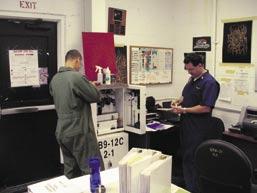
HSL-40 HSL-44 VP-62 VFA-103 NFDS Trelew, Argentina Punta India, Argentina Bahia Blanca, Argentina
MRMs
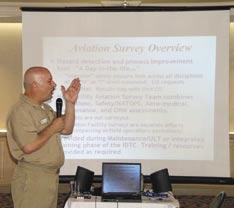


VPU-2 CMO-2 CVN-71 AIMD Trelew, Argentina Punta India, Argentina Bahia Blanca, Argentina AMO School ASO School
Culture Workshops
VP-46 FRC-SW VAQ-139 HS-10 VR-59 VR-62 VR-64 VT-4 VMGR-234 VMGR-452 HMLA-167 HSC-2 HSC-26 HSC-84
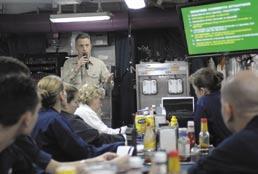
CVN-77 AIMD VFA-154 VFA-37 VFA-94 VQ-7 HM-15 VT-28
For more information or to get on the schedule, please contact: Safety Surveys: Capt. Chris Foley, USMC at 757-444-3520 Ext. 7223, MRM: AEC Matthew Cooper at 757-444-3520 Ext. 7275, Culture Workshop: Cdr. John Morrison at 757-444-3520 Ext. 7213.








